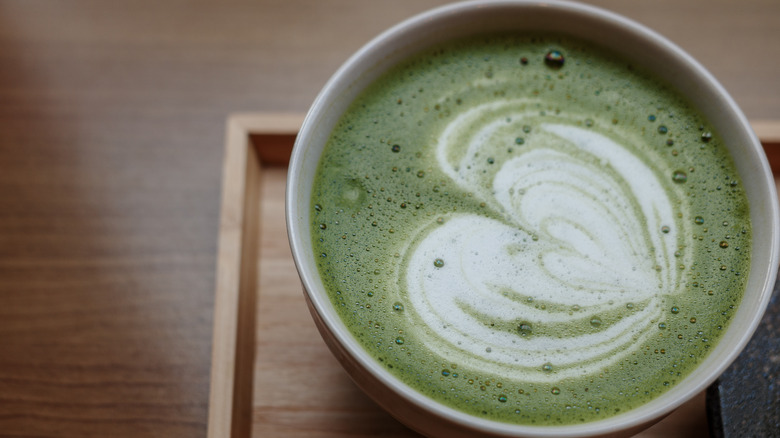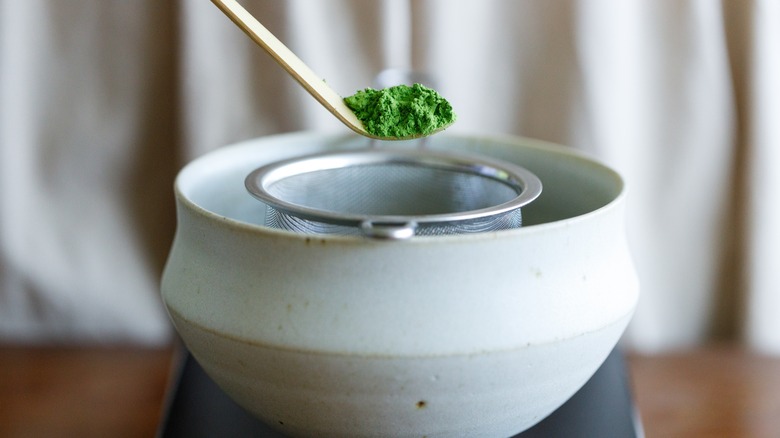
The perfect matcha latte can be hard to find, especially when many coffee chains, bakeries, and eateries can’t seem to get it right. The worst mistake you could make when buying a matcha beverage is getting it from Paris Baguette. Chowhound ranked matcha lattes from 10 popular U.S. coffee chains and found the popular cafe and bakery’s offering to be the worst. While the chain’s other items may be good, the matcha is not. One of the tell-tale signs of a good matcha is the color. A vibrant, grassy green is typically a matcha made right. Paris Baguette’s latte, meanwhile, turns out to be quite deceiving — the color is there, but the flavor is lacking.
The problem with its matcha is that it doesn’t necessarily taste like matcha. We mentioned in our ranking that the matcha flavor wasn’t prominent and tasted like sweetened milk. Matcha is known for having an earthy and bitter taste, and the sweetness level can be adjusted to your preference. A good matcha is meant to have the perfect ratio of grassy and sweet, and Paris Baguette’s does not fall into this category.
What makes the perfect matcha

With the rising popularity of the matcha latte, coffee chains were quick to add the drink to their menus. There are a number of mistakes to avoid when making matcha, and unfortunately, a lot of chains make these errors. Of course, color matters, but using the correct proportion of water, matcha, and milk can make or break the drink. For a cup of matcha, there should be ¼ teaspoon of powder, 2 ounces of hot water, 6 ounces of your preferred milk, and an optional sweetener. This is the problem with Paris Baguette’s matcha: The milk and sweetener completely overpower the tea flavor.
From our review, Blue Bottle Coffee ranked the best. One of the key factors that made this brand’s matcha great was the use of ceremonial-grade matcha. This high-quality matcha powder allows for a bold flavor and vibrant color, which Paris Baguette’s version didn’t have. It’s possible that the bakery and cafe used culinary-grade matcha, which has its differences compared to ceremonial. Ceremonial grade matcha comes from younger tea leaves, whereas culinary grade matcha is a bit lower in quality and made from older tea leaves. At the end of the day, mastering the matcha latte is a difficult task. If you’re looking for a high-quality, delicious version of the drink, Paris Baguette may not be the place to go.



















